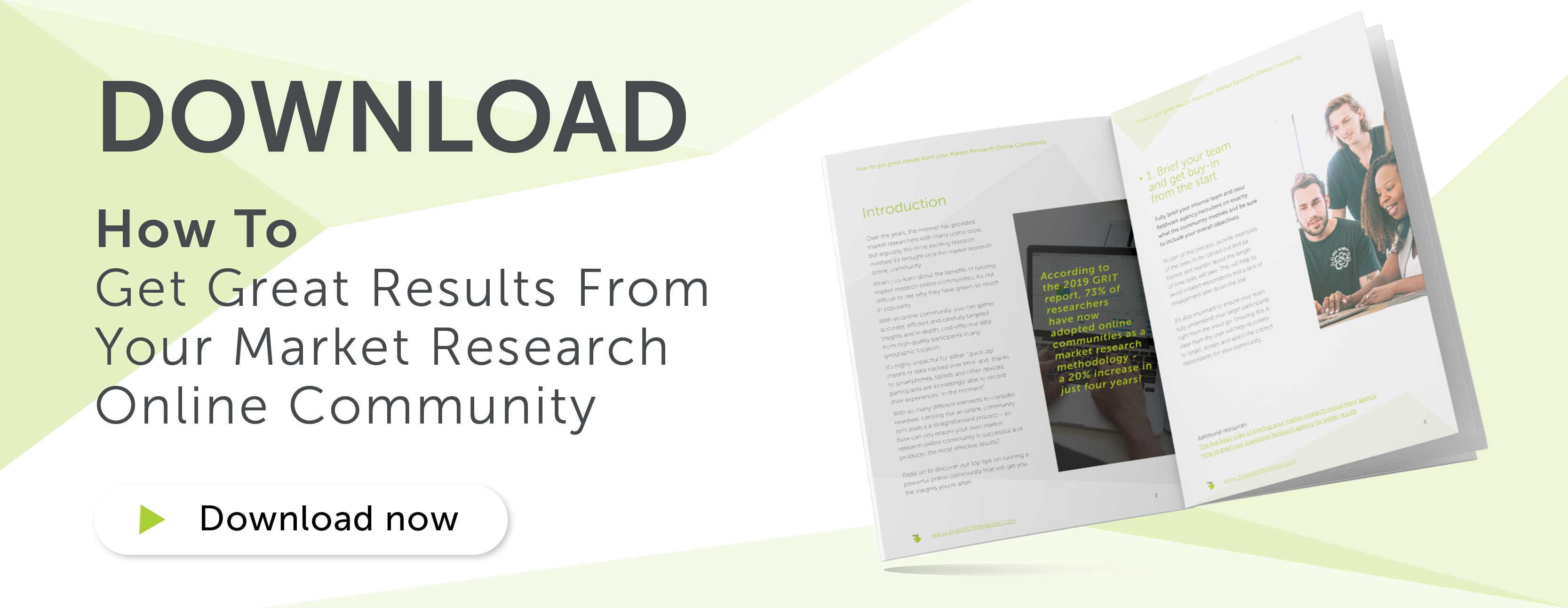
Four tips to help you start telling stories in your research
Storytelling: it’s a bit of an industry buzzword at the moment. In fact, everywhere you turn, you’ll find people harping on about the importance of storytelling in market research (sorry - we’re guilty as charged!). But what is storytelling, why do we need it, and how can you embrace it in your market research? Read on to find out…
The lowdown on storytelling
Storytelling is about connecting your audience to your research. We live in a world that’s drowning in data - but after years of long PowerPoint presentations, charts, graphs and number crunching, decision-makers today are sick of statistics. And that means researchers are now turning to new ways to share insight. Market research today is all about finding the story in your data and making it as engaging as possible. It’s about humanising your findings, making them relatable, and, in turn, making your research memorable.
The brain responds with more focus and engagement when we hear stories as opposed to facts - and as companies compete to understand their customers, winning the race comes down to telling the customer story. But that’s easier said than done, right? Wrong! Read on for our four failsafe tips to help you start telling powerful stories with your market research so you can start making order out of chaos and shape your research into something powerful, enabling you to make customer-centric decisions.
Take it back to the start
If you’re struggling to make sense of your results and can’t figure out the flow of your story, go back to the beginning. Have a look at your original brief and skim over the objectives set out at the start of your research; it’s the best place to start when establishing the plot of your story. Context is everything - so before starting your research, make sure you understand the objectives, pain points and goals of your client, so you can have a pretty good idea of the direction your story needs to go in.
By making sure you have a clear brief, if you go off track, your brief and objectives will always take you back to what you were trying to achieve in the first place. Stories are more memorable and powerful if they build on what your audience already knows and accepts, so by linking your story to your client’s pre-existing beliefs - or in this case, the objectives of the research - you can build on what they already know to tell meaningful stories.
Make sure you’ve got a clear plot
The whole point of storytelling in market research is that it’s an easy-to-understand alternative to data - and that means your story should be easy to follow. A market research story shouldn’t contain multiple plots; rather, it’s supposed to be easy to understand and save executives’ time. Unless facts are tied together as a coherent story we often struggle to recall them - so if your story is too complicated, too jumbled, or leaves your clients scratching their heads and wondering what on earth you’re talking about, it’s time to go back to the drawing board.
When telling your story, look for a key theme that addresses your client’s problem and provides a clear solution, or at least a direction. You should prioritise the most important info and focus on that; more than three key points and you’re undoing all your good work. It’s not about complicated reports or endless information. Instead, it’s about reducing all the data to a coherent story that will answer the questions set out in the objectives - so don’t over complicate things!
Make it visual
Once you’ve got the plot of your story, it’s time to tell it in the most powerful way. Today’s technology allows researchers to share information and tell their stories in new, more exciting ways. Instead of overloading executives with charts and graphs, today, video voxpops or interesting infographics allow you to hold people’s attention and make sure they take notice. We better understand information when we can relate it to something we have heard or experienced, which is why watching a real-life video diary or seeing footage of an actual customer on an accompanied shopping trip is so powerful.
These new techniques cut through the noise to obtain raw, unfiltered context so you can better understand your customers’ true feelings. Not only that, but storytelling also allows you to add depth, emotion and authenticity to your research, which means you can build real human connections. Basically, by humanising your research and making it more interesting, you can deliver impactful, convincing and memorable stories that drive change.
Keep it short and sweet
Lastly, when it comes to powerful storytelling in market research, it’s important to make sure your story doesn’t drag on for too long. With so much information available today via so many different sources, it’s become harder and harder for researchers to reduce all the data down into meaningful messages. You might end up with hundreds of insightful video diaries or reams of footage from ethnographic studies - but just because you’ve got lots of info, it doesn’t mean you need to use it all.
You don't want to overwhelm your audience. Instead, it’s about quickly conveying the story to make sure you keep their interest. Think of someone flipping through a magazine and looking at the pictures: that’s what executives will do when looking through your research - so it’s important that you get the key themes of your story across quickly in the form of short video snippets or easy-to-understand infographics to make sure your key points stand out. Your story should create curiosity in your audience’s mind and make them hungry for more - not send them to sleep as they watch another piece of video footage!
In conclusion, storytelling in market research is all about bringing your research to life and sharing insights in an alternative way to make sure decision-makers sit up, take notice and start making informed customer-centric decisions.
Want to find out more? Download our guide now!














